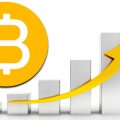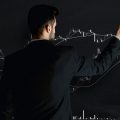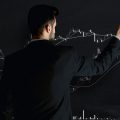On October 30, the US Federal Reserve continued to ease monetary policy, reducing the rate by 25bp up to 1.75%. Since the decline was expected, all attention was focused on the speech of the head of the Federal Reserve, which was very optimistic. Jerome Powell expects gradual economic growth due to a strong labor market and high consumer demand, in addition, a weakening dollar helps accelerate inflation and increase exports. Against the background of compromises and the achievement of certain agreements in negotiations with China, largely in favor of the United States, it is difficult to disagree with the head of the Fed. Further reduction in rates this year is unlikely, most likely, the remaining 2 months, economists will evaluate the results and plan future policies, unless, of course, Trump intervenes, who for the first time in a long time did not react to the actions of the Fed.
In the context of moderate economic growth andpossible deferment of the recession, investors saw an excellent opportunity to make money by turning on the Risk On mode. The single European currency has strengthened and is trying to gain a foothold above the level of 1.11500 and test the MA 200. This can be achieved if weak US labor market data is released on Friday. The next goal of the euro will be the level of 1.13000, which is at the same time a strong historical resistance and the resistance line of the annual downward channel.
The exit from the downward channel seemsit is unlikely, given that the ECB has included a program of quantitative easing and at the end of the year may go to lower rates to a negative value, because, like the Fed, it is trying to stimulate the economy and accelerate inflation.
Stock markets for the first time in six monthswere able to demonstrate growth, rather than attempts at it, updating historical highs. The S&P500 index (SPX) has risen above the resistance of 3025, which held it for six months and is striving to conquer new heights. However, a logical question arises here: will investors decide to buy so high and if so, how soon will they start taking profits? How much will they be able to accelerate the bullish rally and will they be able to do so at all?
There are a lot of other underestimated risky assets on the market, which, in anticipation of investments, are ready to literally soar into the sky and bring a decent profit. Emerging markets and cryptocurrencies, for example.
Bitcoin, having tested the 7400 level, whichturned out to be 1 in 1 with the 0.618 Fibonacci level, returned above the MA200 and stopped at the 9600 level, which is a strong resistance and the 0.382 Fibonacci level, which previously kept BTC from collapsing. In the coming days, a retest of MA200 in the area of 8500 (Fibonacci level 50) is possible with a further rebound upward to 10800 and higher in favorable scenarios.
Are investors willing to take risks and invest incrypto? Maybe. At least, if you focus on the volatility index, and more specifically on the VXX bond based on the VIX index, which mirrors the dynamics of bitcoin and indicates investor confidence and the absence of fear in the markets. Moreover, for these purposes, investors now have Bakkt.
For those who are not satisfied with either the stock market orcryptocurrency, there is an excellent alternative in the form of emerging markets, which need investments no less and are already showing gradual growth.
In any case, the Fed has pushed investors torisk, and this means that now you can focus on stock, cryptocurrency and emerging markets. Which of them will be preferable, it will become clear in the coming days.
The upward trend in risky assets mayremain until the end of the year, since the monetary policy of the leading Central Banks seems quite transparent and predictable, at least until the end of the year. Accordingly, there is no reason to be cautious now, as well as the general uncertainty that fettered the markets for almost the whole of 2019.
Dmitry Lazukov, an analyst with the regulated cryptocurrency exchange Currency.com.




